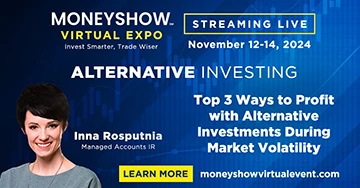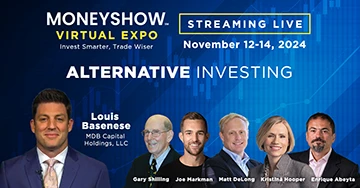The unpredictable volatility that has come to characterize early-2012 trading makes one particular trade set-up highly reliable, explains trader Adrian Manz.
Traders have had some interesting volatility patterns here in the first part of 2012. My guest today is Adrian Manz to talk about that. So, Adrian, how has volatility changed, and how are you trading it these days?
Volatility has become less predictable. So, in our case, what we’ve always looked for is volatility occurring in a trending pattern in the broader indices and if volatility is mean reverting.
When those two things are in place, we look for markets that behave sort of cyclically, and what’s been going on lately in the air of all of this geopolitical stuff that’s going on in the world is that volatility is not mean reverting.
Volatility pounds right through the mean and then winds up being dramatically extended, and what it does is make for some unpredictable trading.
In our case, a lot of patterns set up and then either never trigger because they gap, or never trigger because the market reverses. So what it’s done to us is limited the range of opportunities, but the opportunities are still there.
Now, are you trading the VIX directly or using it more as something to look at when you’re trading something else?
No, I just use it as a barometer of what’s going on in the market and try to make some adjustments to position size, try to make adjustments as to the patterns that I’m looking for.
If the market is in a phase where we’ve got a mean-reverting volatility and you’ve got mean-reverting price trends, then we go and look for certain patterns.
In a market like this one, where things are blowing out all of the time, I’m basically just looking for expansion range of volume set-ups and trying to get on the right side of those as often as I can.
Alright, talk about that set-up. What exactly are you looking for?
So, this one goes back to the first book that I wrote, Around the Horn, and it was called a “fastball” set-up. It’s an expansion-of-range, expansion-of-volume trade.
You’re looking for the widest range of the past two trading weeks, or the past ten sessions. You want to see a big breakout above either a pullback or a consolidation, and then I’m just looking to get in ten cents beyond the extreme of that bar, whether it’s a long or a short.
That technique is sort of our bread-and-butter trading strategy. When the markets get volatile, what I said in Trade Secrets, the second book, was when the market gets crazy, you can change your time compression.
You can go out to a much wider time compression and look for that same set-up in a weekly time frame rather than daily, or you can also go and narrow it down into a micro time frame intraday, looking for news events.
The pattern is the pattern. It’s telling you what’s going on in the market. Expansion of range and expansion of volume is a reaction of the volatility, it’s a reaction of program trades. So if you can get in front of it, you’ve got opportunity. If it gaps away from you, it’s just a missed trade. You don’t have a loss, you don’t have a gain; you have nothing.
It sounds like you have to be really patient here to wait for these to come around.
Oh, absolutely. I spoke with a friend of mine down at the exchange the other day, and he introduced me and said, “Adrian’s a trapper.” There are hunters and there are trappers, and I’m definitely a trapper; nothing could be more true. We sit and wait, and a lot of days, we have no trades, but that’s OK.
Waiting for that profitable one to come along makes all the difference.
That’s right.
Related Reading:










































